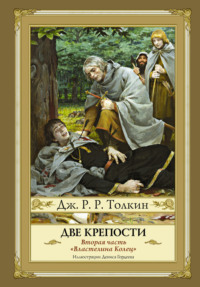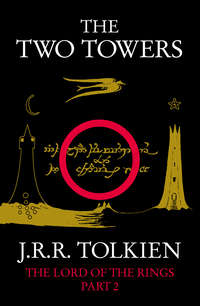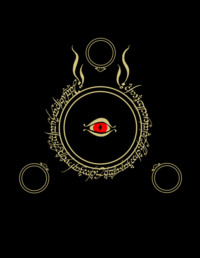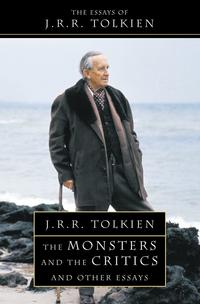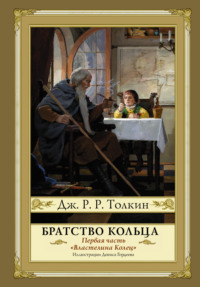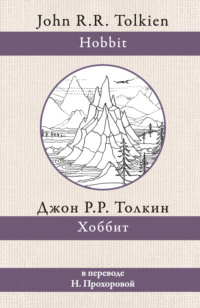
Полная версия
Unfinished Tales



UNFINISHED TALES
of Númenor and Middle-earth
BY
J.R.R. TOLKIEN
Edited by Christopher Tolkien



Copyright
HarperCollinsPublishers Ltd.
1 London Bridge Street
London SE1 9GF
www.harpercollins.co.uk
www.tolkien.co.uk
This edition 1998
First published in Great Britain by George Allen & Unwin 1980
Copyright © The J.R.R.Tolkien Copyright Trust and C.R.Tolkien 1980

All rights reserved under International and Pan-American Copyright Conventions. By payment of the required fees, you have been granted the non-exclusive, non-transferable right to access and read the text of this ebook on-screen. No part of this text may be reproduced, transmitted, down-loaded, decompiled, reverse engineered, or stored in or introduced into any information storage and retrieval system, in any form or by any means, whether electronic or mechanical, now known or hereinafter invented, without the express written permission of HarperCollins ebooks
HarperCollinsPublishers has made every reasonable effort to ensure that any picture content and written content in this ebook has been included or removed in accordance with the contractual and technological constraints in operation at the time of publication
Source ISBN: 9780261103627
Ebook Edition © MARCH 2009 ISBN: 9780007322572
Version: 2017-10-26
Unfinished Tales of Númenor and Middle-earth is a collection of narratives ranging in time from the Elder Days of Middle-earth to the end of the War of the Ring, and comprising such various elements as Gandalf’s lively account of how it was that he came to send the Dwarves to the celebrated party at Bag-End, the emergence of the sea-god Ulmo before the eyes of Tuor on the coast of Beleriand, and an exact description of the military organisation of the Riders of Rohan. The book contains the only story that survived from the long ages of Númenor before its downfall, and all that is known of such matters as the Five Wizards, the Palantíri, or the legend of Amroth.
Writing of the Appendices to The Lord of the Rings J. R. R. Tolkien said in 1955: ‘Those who enjoy the book as a “heroic romance” only, and find “unexplained vistas” part of the literary effect, will neglect the Appendices, very properly.’ Unfinished Tales is avowedly for those who, on the contrary, have not yet sufficiently explored Middle-earth, its languages, its legends, its politics, and its kings.
Christopher Tolkien has edited and introduces this collection. He has also redrawn the map for The Lord of the Rings to a larger scale and reproduced the only map of Númenor that J. R. R. Tolkien ever made.
Contents
COVER PAGE
TITLE PAGE
COPYRIGHT PAGE
NOTE
INTRODUCTION
PART ONE: THE FIRST AGE
I: OF TUOR AND HIS COMING TO GONDOLIN
II: NARN I HÎN HÚRIN
PART TWO: THE SECOND AGE
I: A DESCRIPTION OF THE ISLAND OF NÚMENOR
II: ALDARION AND ERENDIS
III: THE LINE OF ELROS: KINGS OF NÚMENOR
IV: THE HISTORY OF GALADRIEL AND CELEBORN
PART THREE: THE THIRD AGE
I: THE DISASTER OF THE GLADDEN FIELDS
II: CIRION AND EORL AND THE FRIENDSHIP OF GONDOR AND ROHAN
III: THE QUEST OF EREBOR
IV: THE HUNT FOR THE RING
V: THE BATTLES OF THE FORDS OF ISEN
PART FOUR
I: THE DRÚEDAIN
II: THE ISTARI
III: THE PALANTÍRI
KEEP READING
INDEX
WORKS BY J. R. R. TOLKIEN
ABOUT THE PUBLISHER
NOTE
It has been necessary to distinguish author and editor in different ways in different parts of this book, since the incidence of commentary is very various. The author appears in larger type in the primary texts throughout; if the editor intrudes into one of these texts he is in smaller type indented from the margin (e.g. p. 380). In The History of Galadriel and Celeborn, however, where the editorial text is predominant, the reverse indentation is employed. In the Appendices (and also in The Further Course of the Narrative of ‘Aldarion and Erendis’, pp. 264 ff.) both author and editor are in the smaller type, with citations from the author indented (e.g. p. 198).
Notes to texts in the Appendices are given as footnotes rather than as numbered references; and the author’s own annotation of a text at a particular point is indicated throughout by the words ‘[Author’s note]’.
INTRODUCTION
The problems that confront one given responsibility for the writings of a dead author are hard to resolve. Some persons in this position may elect to make no material whatsoever available for publication, save perhaps for work that was in a virtually finished state at the time of the author’s death. In the case of the unpublished writings of J. R. R. Tolkien this might seem at first sight the proper course; since he himself, peculiarly critical and exacting of his own work, would not have dreamt of allowing even the more completed narratives in this book to appear without much further refinement.
On the other hand, the nature and scope of his invention seems to me to place even his abandoned stories in a peculiar position. That The Silmarillion should remain unknown was for me out of the question, despite its disordered state, and despite my father’s known if very largely unfulfilled intentions for its transformation; and in that case I presumed, after long hesitation, to present the work not in the form of an historical study, a complex of divergent texts interlinked by commentary, but as a completed and cohesive entity. The narratives in this book are indeed on an altogether different footing: taken together they constitute no whole, and the book is no more than a collection of writings, disparate in form, intent, finish, and date of composition (and in my own treatment of them), concerned with Númenor and Middle-earth. But the argument for their publication is not different in its nature, though it is of lesser force, from that which I held to justify the publication of The Silmarillion. Those who would not have forgone the images of Melkor with Ungoliant looking down from the summit of Hyarmentir upon ‘the fields and pastures of Yavanna, gold beneath the tall wheat of the gods’; of the shadows of Fingolfin’s host cast by the first moonrise in the West; of Beren lurking in wolf’s shape beneath the throne of Morgoth; or of the light of the Silmaril suddenly revealed in the darkness of the Forest of Neldoreth – they will find, I believe, that imperfections of form in these tales are much outweighed by the voice (heard now for the last time) of Gandalf, teasing the lordly Saruman at the meeting of the White Council in the year 2851, or describing in Minas Tirith after the end of the War of the Ring how it was that he came to send the Dwarves to the celebrated party at Bag-End; by the arising of Ulmo Lord of Waters out of the sea at Vinyamar; by Mablung of Doriath hiding ‘like a vole’ beneath the ruins of the bridge at Nargothrond; or by the death of Isildur as he floundered up out of the mud of Anduin.
Many of the pieces in this collection are elaborations of matters told more briefly, or at least referred to, elsewhere; and it must be said at once that much in the book will be found unrewarding by readers of The Lord of the Rings who, holding that the historical structure of Middle-earth is a means and not an end, the mode of the narrative and not its purpose, feel small desire of further exploration for its own sake, do not wish to know how the Riders of the Mark of Rohan were organised, and would leave the Wild Men of the Drúadan Forest firmly where they found them. My father would certainly not have thought them wrong. He said in a letter written in March 1955, before the publication of the third volume of The Lord of the Rings:
I now wish that no appendices had been promised! For I think their appearance in truncated and compressed form will satisfy nobody: certainly not me; clearly from the (appalling mass of ) letters I receive not those people who like that kind of thing – astonishingly many; while those who enjoy the book as an ‘heroic romance’ only, and find ‘unexplained vistas’ part of the literary effect, will neglect the appendices, very properly.
I am not now at all sure that the tendency to treat the whole thing as a kind of vast game is really good – certainly not for me, who find that kind of thing only too fatally attractive. It is, I suppose, a tribute to the curious effect that story has, when based on very elaborate and detailed workings of geography, chronology, and language, that so many should clamour for sheer ‘information’, or ‘lore’.
In a letter of the following year he wrote:
... while many like you demand maps, others wish for geological indications rather than places; many want Elvish grammars, phonologies, and specimens; some want metrics and prosodies.... Musicians want tunes, and musical notation; archaeologists want ceramics and metallurgy; botanists want a more accurate description of the mallorn, of elanor, niphredil, alfirin, mallos, and symbelmynë; historians want more details about the social and political structure of Gondor; general enquirers want information about the Wainriders, the Harad, Dwarvish origins, the Dead Men, the Beornings, and the missing two wizards (out of five).
But whatever view may be taken of this question, for some, as for myself, there is a value greater than the mere uncovering of curious detail in learning that Vëantur the Númenórean brought his ship Entulessë, the ‘Return’, into the Grey Havens on the spring winds of the six hundredth year of the Second Age, that the tomb of Elendil the Tall was set by Isildur his son on the summit of the beacon-hill Halifirien, that the Black Rider whom the Hobbits saw in the foggy darkness on the far side of Bucklebury Ferry was Khamûl, chief of the Ringwraiths of Dol Guldur – or even that the childlessness of Tarannon twelfth King of Gondor (a fact recorded in an Appendix to The Lord of the Rings) was associated with the hitherto wholly mysterious cats of Queen Berúthiel.
The construction of the book has been difficult, and in the result is somewhat complex. The narratives are all ‘unfinished’, but to a greater or lesser degree, and in different senses of the word, and have required different treatment; I shall say something below about each one in turn, and here only call attention to some general features.
The most important is the question of ‘consistency’, best illustrated from the section entitled ‘The History of Galadriel and Celeborn’. This is an ‘Unfinished Tale’ in a larger sense: not a narrative that comes to an abrupt halt, as in ‘Of Tuor and his Coming to Gondolin’, nor a series of fragments, as in ‘Cirion and Eorl’, but a primary strand in the history of Middle-earth that never received a settled definition, let alone a final written form. The inclusion of the unpublished narratives and sketches of narrative on this subject therefore entails at once the acceptance of the history not as a fixed, independently-existing reality which the author ‘reports’ (in his ‘persona’ as translator and redactor), but as a growing and shifting conception in his mind. When the author has ceased to publish his works himself, after subjecting them to his own detailed criticism and comparison, the further knowledge of Middle-earth to be found in his unpublished writings will often conflict with what is already ‘known’; and new elements set into the existing edifice will in such cases tend to contribute less to the history of the invented world itself than to the history of its invention. In this book I have accepted from the outset that this must be so; and except in minor details such as shifts in nomenclature (where retention of the manuscript form would lead to disproportionate confusion or disproportionate space in elucidation) I have made no alterations for the sake of consistency with published works, but rather drawn attention throughout to conflicts and variations. In this respect therefore ‘Unfinished Tales’ is essentially different from The Silmarillion, where a primary though not exclusive objective in the editing was to achieve cohesion both internal and external; and except in a few specified cases I have indeed treated the published form of The Silmarillion as a fixed point of reference of the same order as the writings published by my father himself, without taking into account the innumerable ‘unauthorised’ decisions between variants and rival versions that went into its making.
In content the book is entirely narrative (or descriptive): I have excluded all writings about Middle-earth and Aman that are of a primarily philosophic or speculative nature, and where such matters from time to time arise I have not pursued them. I have imposed a simple structure of convenience by dividing the texts into Parts corresponding to the first Three Ages of the World, there being in this inevitably some overlap, as with the legend of Amroth and its discussion in ‘The History of Galadriel and Celeborn’. The fourth part is an appendage, and may require some excuse in a book called ‘Unfinished Tales’, since the pieces it contains are generalised and discursive essays with little or no element of ‘story’. The section on the Drúedain did indeed owe its original inclusion to the story of ‘The Faithful Stone’ which forms a small part of it; and this section led me to introduce those on the Istari and the Palantíri, since they (especially the former) are matters about which many people have expressed curiosity, and this book seemed a convenient place to expound what there is to tell.
The notes may seem to be in some places rather thick on the ground, but it will be seen that where clustered most densely (as in ‘The Disaster of the Gladden Fields’) they are due less to the editor than to the author, who in his later work tended to compose in this way, driving several subjects abreast by means of interlaced notes. I have throughout tried to make it clear what is editorial and what is not. And because of this abundance of original material appearing in the notes and appendices I have thought it best not to restrict the page-references in the Index to the texts themselves but to cover all parts of the book except the Introduction.
I have throughout assumed on the reader’s part a fair knowledge of the published works of my father (more especially The Lord of the Rings), for to have done otherwise would have greatly enlarged the editorial element, which may well be thought quite sufficient already. I have, however, included short defining statements with almost all the primary entries in the Index, in the hope of saving the reader from constant reference elsewhere. If I have been inadequate in explanation or unintentionally obscure, Mr Robert Foster’s Complete Guide to Middle-earth supplies, as I have found through frequent use, an admirable work of reference.
Page-references to The Silmarillion are to the hardback edition; to The Lord of the Rings by title of the volume, book, and chapter.
There follow now primarily bibliographical notes on the individual pieces.
PART ONE
I
Of Tuor and his Coming to Gondolin
My father said more than once that ‘The Fall of Gondolin’ was the first of the tales of the First Age to be composed, and there is no evidence to set against his recollection. In a letter of 1964 he declared that he wrote it ‘ “out of my head” during sick-leave from the army in 1917’, and at other times he gave the date as 1916 or 1916 – 17. In a letter to me written in 1944 he said: ‘I first began to write [The Silmarillion ] in army huts, crowded, filled with the noise of gramophones’: and indeed some lines of verse in which appear the Seven Names of Gondolin are scribbled on the back of a piece of paper setting out ‘the chain of responsibility in a battalion’. The earliest manuscript is still in existence, filling two small school exercise-books; it was written rapidly in pencil, and then, for much of its course, overlaid with writing in ink, and heavily emended. On the basis of this text my mother, apparently in 1917, wrote out a fair copy; but this in turn was further substantially emended, at some time that I cannot determine, but probably in 1919 – 20, when my father was in Oxford on the staff of the then still uncompleted Dictionary. In the spring of 1920 he was invited to read a paper to the Essay Club of his college (Exeter); and he read ‘The Fall of Gondolin’. The notes of what he intended to say by way of introduction to his ‘essay’ still survive. In these he apologised for not having been able to produce a critical paper, and went on: ‘Therefore I must read something already written, and in desperation I have fallen back on this Tale. It has of course never seen the light before.... A complete cycle of events in an Elfinesse of my own imagining has for some time past grown up (rather, has been constructed) in my mind. Some of the episodes have been scribbled down....
This tale is not the best of them, but it is the only one that has so far been revised at all and that, insufficient as that revision has been, I dare read aloud.’
The tale of Tuor and the Exiles of Gondolin (as ‘The Fall of Gondolin’ is entitled in the early MSS) remained untouched for many years, though my father at some stage, probably between 1926 and 1930, wrote a brief, compressed version of the story to stand as part of The Silmarillion (a title which, incidentally, first appeared in his letter to The Observer of 20 February 1938); and this was changed subsequently to bring it into harmony with altered conceptions in other parts of the book. Much later he began work on an entirely refashioned account, entitled ‘Of Tuor and the Fall of Gondolin’. It seems very likely that this was written in 1951, when The Lord of the Rings was finished but its publication doubtful. Deeply changed in style and bearings, yet retaining many of the essentials of the story written in his youth, ‘Of Tuor and the Fall of Gondolin’ would have given in fine detail the whole legend that constitutes the brief 23rd chapter of the published Silmarillion; but, grievously, he went no further than the coming of Tuor and Voronwë to the last gate and Tuor’s sight of Gondolin across the plain of Tumladen. To his reasons for abandoning it there is no clue.
This is the text that is given here. To avoid confusion I have retitled it ‘Of Tuor and his Coming to Gondolin’, since it tells nothing of the fall of the city. As always with my father’s writings there are variant readings, and in one short section (the approach to and passage of the river Sirion by Tuor and Voronwë) several competing forms; some minor editorial work has therefore been necessary.
It is thus the remarkable fact that the only full account that my father ever wrote of the story of Tuor’s sojourn in Gondolin, his union with Idril Celebrindal, the birth of Ea¨rendil, the treachery of Maeglin, the sack of the city, and the escape of the fugitives – a story that was a central element in his imagination of the First Age – was the narrative composed in his youth. There is no question, however, that that (most remarkable) narrative is not suitable for inclusion in this book. It is written in the extreme archaistic style that my father employed at that time, and it inevitably embodies conceptions out of keeping with the world of The Lord of the Rings and The Silmarillion in its published form. It belongs with the rest of the earliest phase of the mythology, ‘the Book of Lost Tales’: itself a very substantial work, of the utmost interest to one concerned with the origins of Middle-earth, but requiring to be presented in a lengthy and complex study if at all.
II
The Tale of the Children of Húrin
The development of the legend of Túrin Turambar is in some respects the most tangled and complex of all the narrative elements in the story of the First Age. Like the tale of Tuor and the Fall of Gondolin it goes back to the very beginnings, and is extant in an early prose narrative (one of the ‘Lost Tales’) and in a long, unfinished poem in alliterative verse. But whereas the later ‘long version’ of Tuor never proceeded very far, my father carried the later ‘long version’ of Túrin much nearer completion. This is called Narn i Hîn Húrin; and this is the narrative that is given in the present book.
There are however great differences in the course of the long Narn in the degree to which the narrative approaches a perfected or final form. The concluding section (from The Return of Túrin to Dor-lómin to The Death of Túrin) has undergone only marginal editorial alteration; while the first section (to the end of Túrin in Doriath) required a good deal of revision and selection, and in some places some slight compression, the original texts being scrappy and disconnected. But the central section of the narrative (Túrin among the outlaws, Mîm the Petty-dwarf, the land of Dor-Cúarthol, the death of Beleg at Túrin’s hand, and Túrin’s life in Nargothrond) constituted a much more difficult editorial problem. The Narn is here at its least finished, and in places diminishes to outlines of possible turns in the story. My father was still evolving this part when he ceased to work on it; and the shorter version for The Silmarillion was to wait on the final development of the Narn. In preparing the text of The Silmarillion for publication I derived, by necessity, much of this section of the tale of Túrin from these very materials, which are of quite extraordinary complexity in their variety and interrelations.
For the first part of this central section, as far as the beginning of Túrin’s sojourn in Mîm’s dwelling on Amon Rûdh, I have contrived a narrative, in scale commensurate with other parts of the Narn, out of the existing materials (with one gap, see p. 124 and note 12); but from that point onwards (see p. 135) until Túrin’s coming to Ivrin after the fall of Nargothrond I have found it unprofitable to attempt it. The gaps in the Narn are here too large, and could only be filled from the published text of The Silmarillion; but in an Appendix (pp. 193 ff.) I have cited isolated fragments from this part of the projected larger narrative.
In the third section of the Narn (beginning with The Return of Túrin to Dor-lómin) a comparison with The Silmarillion (pp. 215 – 26) will show many close correspondences, and even identities of wording; while in the first section there are two extended passages that I have excluded from the present text (see p. 76 and note 1, and p. 86 and note 2), since they are close variants of passages that appear elsewhere and are included in the published Silmarillion. This overlapping and interrelation between one work and another may be explained in different ways, from different points of view. My father delighted in re-telling on different scales; but some parts did not call for more extended treatment in a larger version, and there was no need to rephrase for the sake of it. Again, when all was still fluid and the final organisation of the distinct narratives still a long way off, the same passage might be experimentally placed in either. But an explanation can be found at a different level. Legends like that of Túrin Turambar had been given a particular poetic form long ago – in this case, the Narn i Hîn Húrin of the poet Dírhavel – and phrases, or even whole passages, from it (especially at moments of great rhetorical intensity, such as Túrin’s address to his sword before his death) would be preserved intact by those who afterwards made condensations of the history of the Elder Days (as The Silmarillion is conceived to be).





